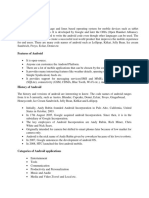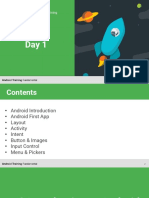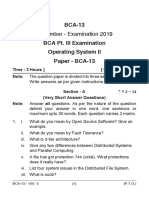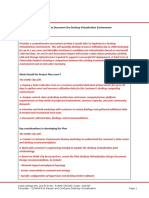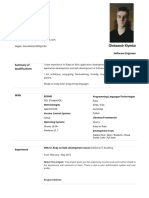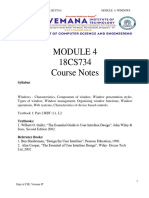0% found this document useful (0 votes)
31 views8 pagesAndroid Architecture
The document outlines the architecture of Android, detailing its layered structure from the Linux Kernel to user applications, and explains the Activity Lifecycle, which includes states like onCreate, onStart, and onDestroy. It also provides a step-by-step guide for installing Android Studio on Windows, including system requirements and initial configuration. Additionally, it covers the concept of Intents for communication between app components, the use of Fragments for dynamic UI design, and how to listen for UI notifications in Android applications.
Uploaded by
iamamelia560Copyright
© © All Rights Reserved
We take content rights seriously. If you suspect this is your content, claim it here.
Available Formats
Download as DOCX, PDF, TXT or read online on Scribd
0% found this document useful (0 votes)
31 views8 pagesAndroid Architecture
The document outlines the architecture of Android, detailing its layered structure from the Linux Kernel to user applications, and explains the Activity Lifecycle, which includes states like onCreate, onStart, and onDestroy. It also provides a step-by-step guide for installing Android Studio on Windows, including system requirements and initial configuration. Additionally, it covers the concept of Intents for communication between app components, the use of Fragments for dynamic UI design, and how to listen for UI notifications in Android applications.
Uploaded by
iamamelia560Copyright
© © All Rights Reserved
We take content rights seriously. If you suspect this is your content, claim it here.
Available Formats
Download as DOCX, PDF, TXT or read online on Scribd
/ 8









































